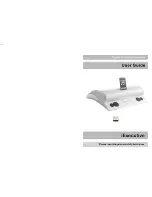
6
Use equal lengths of the appropriate wire
to bi-wiring the speakers. Consult your
dealer for cable options. Connect the
wires between the amplifi er and speakers
as illustrated.
CONNECTING THE SPEAKERS
Map out the wiring paths from the speakers to the amplifi er. We recommend 16-gauge wire for
runs up to 25 feet, and 14-gauge wire for longer runs. Be sure the speaker wire does not rest or
rub against any sharp or pointed objects. Allow an extra foot of wire at the speaker location to
make it easier to connect the speaker before setting it in position .
For normal, single wire connection, unscrew (turn counter-clock-
wise) one set of the terminal knobs. Strip about 1/2” (12mm) of
the insulation from the two wire conductors and twist the wire
strands into a tight bundle. Insert the wire into the hole in the
terminal shaft and turn the terminal knob clockwise to clamp
the wire in place. Be sure there are no loose strands of wire that
could touch the other terminal.
Be sure the positive and negative speaker terminals of the am-
plifi er are connected to the corresp (red) and – (black)
terminals of the speakers. All wire is marked in some way to
make it easy to trace the connections. The two conductors will
be color coded, or there will be a stripe or ridge on the insula-
tion, to identify them.
The terminals also accept wires with pin lugs or spade lugs at-
tached. Dual banana plugs can also be plugged into the back of
the terminals.
When connecting more than two speakers per amplifi er channel, you should use series/parallel
wiring. In all cases, make certain that the total impedance does not fall below the amplifi er’s
rating. If you are not sure, contact your Snell Acoustics dealer.
BI-WIRING
High performance audio systems can benefi t from bi-wiring the speakers.
This involves connecting two sets of wires between the amplifi er and the
speakers. If you are bi-wiring your speakers removed the terminal straps
by loosing the terminal knobs and sliding the straps to the side.
amplifier
IC-K7-CR7-LCR7-D7 - Final.indd 6
IC-K7-CR7-LCR7-D7 - Final.indd 6
11/3/08 5:51:04 PM
11/3/08 5:51:04 PM


























